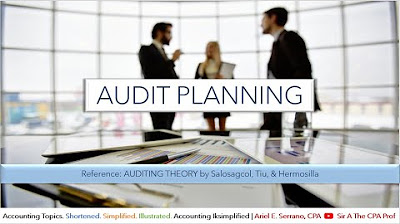How To Charge For Design & Creative Work (Full Sales Masterclass & Roleplay)
Summary
TLDRIn this insightful video, Chris Doe delves into the intricacies of pricing strategies, emphasizing the importance of understanding the client's business goals and challenges. He advocates for value-based pricing over hourly rates, highlighting the need to shift focus from time spent to the value provided. Chris shares his personal experiences and insights, discussing the impact of pricing models on business growth and the art of engaging in meaningful dialogue with clients to uncover their true needs. The video serves as a guide for creatives to navigate the complex world of pricing with confidence and strategic thinking.
Takeaways
- 📈 Understand the importance of pricing strategies and their impact on business growth.
- 🤔 Be open to learning and applying pricing strategies in the real world.
- 🔄 Recognize the three scopes of pricing: time-based, project-based, and value-based pricing.
- 🚀 Embrace value-based pricing to focus on the value provided rather than just the time spent.
- 💡 Know when to pivot from one pricing model to another based on the problem at hand.
- 📝 Ask the right questions to diagnose a client's needs and goals.
- 🔍 Conduct thorough research on the client's business before engaging in dialogue.
- 🤝 Approach client interactions with the intention to serve and provide clarity, not just to sell.
- 💰 Understand that premium experiences and branding require significant investment across all touchpoints.
- 🔄 Be prepared to adjust your pricing based on the client's willingness to invest in their business.
- 🧠 Develop a mature and self-confident mindset to effectively navigate sales conversations.
Q & A
What are the three scopes of pricing mentioned in the video?
-The three scopes of pricing mentioned are time-based pricing, project-based pricing, and value-based pricing.
Why does Chris advocate for value-based pricing over hourly pricing?
-Chris advocates for value-based pricing because it shifts the focus from the time spent to the value provided, allowing for a more fair and potentially profitable pricing model.
What is the main challenge of implementing value-based pricing?
-The main challenge is understanding the unique value each customer places on the product or service, as it requires a business dialogue with the customer to determine what they value differently.
How does Chris decide which pricing model to use in his career?
-Chris uses all three pricing models depending on the specific situation and what is advantageous for both him and the client, recognizing that no one solution works for all people at all times.
What is the importance of understanding the client's business and goals before pricing a service?
-Understanding the client's business and goals allows for a more accurate and fair pricing strategy, ensuring that the service provided aligns with the client's needs and the value they expect to receive.
What does Chris mean by 'selling time' in the context of pricing strategies?
-In this context, 'selling time' refers to understanding the value the client places on their time and how quickly they need a solution, which can influence the pricing based on the urgency and importance of the service.
Why is it important for creatives to avoid selling units of time when the outcome is more important?
-Selling units of time when the outcome is more important can limit the earning potential and not capture a fair percentage of the value created, as the focus should be on the transformative impact of the creative work rather than the time spent on it.
What is the 'ICE' acronym mentioned in the video, and how does it help in understanding a client's needs?
-The 'ICE' acronym stands for Impact, Challenge, and End Goal. It helps in structuring the conversation with the client to understand the impact of the solution on their business, the challenges they are facing, and the ultimate goal they want to achieve.
How does Chris approach a client who is unsure about their pricing strategy?
-Chris approaches by asking a series of diagnostic questions to understand the client's business, their goals, the challenges they face, and the potential solutions. This helps in determining the most appropriate pricing model for the client's specific needs.
What is the role of personal development in effective pricing and negotiation?
-Personal development plays a crucial role as it builds confidence, self-awareness, and the ability to approach clients from a place of service rather than desperation. This mindset helps in conducting business in a way that is attractive to clients and leads to more successful negotiations.
Outlines

This section is available to paid users only. Please upgrade to access this part.
Upgrade NowMindmap

This section is available to paid users only. Please upgrade to access this part.
Upgrade NowKeywords

This section is available to paid users only. Please upgrade to access this part.
Upgrade NowHighlights

This section is available to paid users only. Please upgrade to access this part.
Upgrade NowTranscripts

This section is available to paid users only. Please upgrade to access this part.
Upgrade NowBrowse More Related Video

Audit Planning | Understanding the Entity and its Environment | Hermosilla, Tiu, Salosagcol

Teaching Developers the Big Picture

A Week of Indie App Development - Creating a new app | Moodmonk Devlog #1

What is Pricing in marketing? | Pricing strategies

Alex Hormozi on Scaling SMMAs (FULL INTERVIEW)

5 caminhos para ganhar R$100 mil por mês
5.0 / 5 (0 votes)